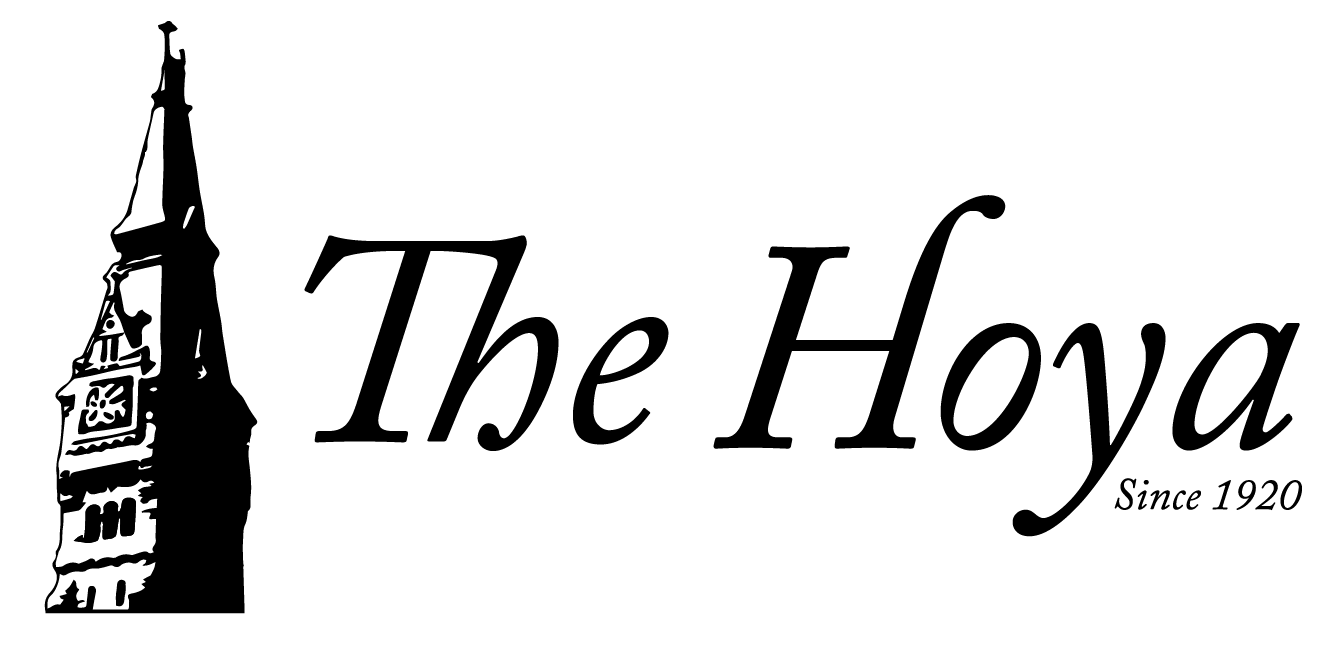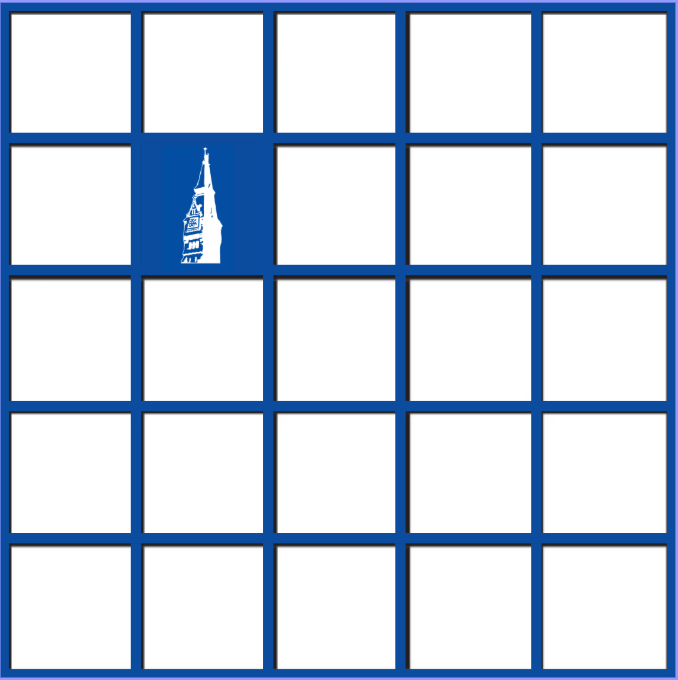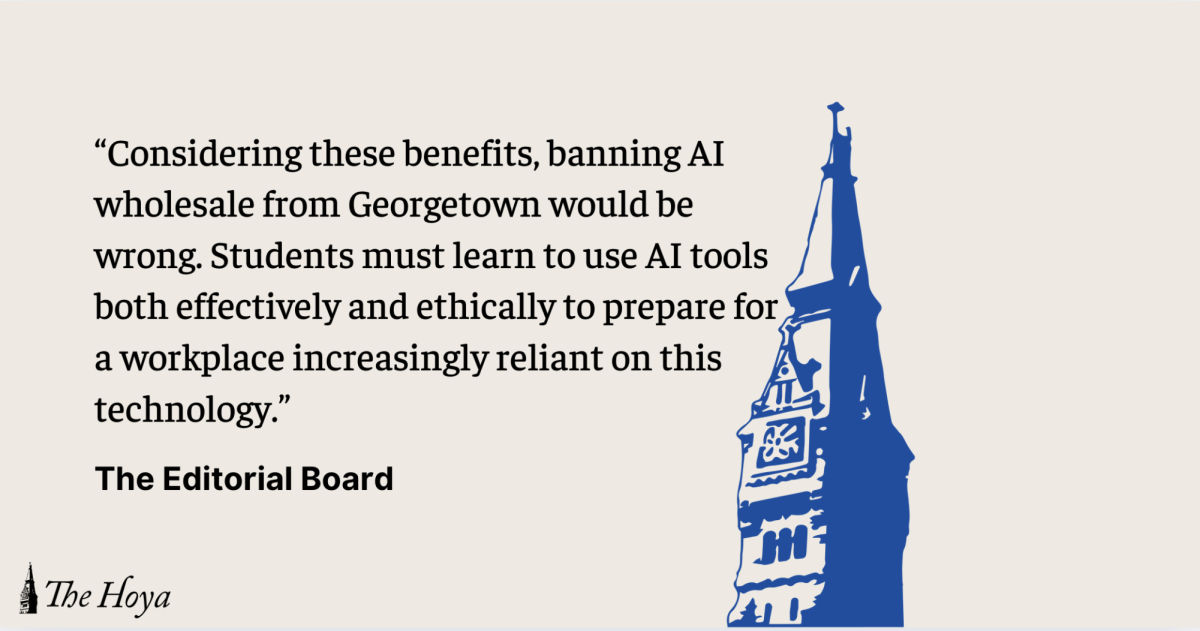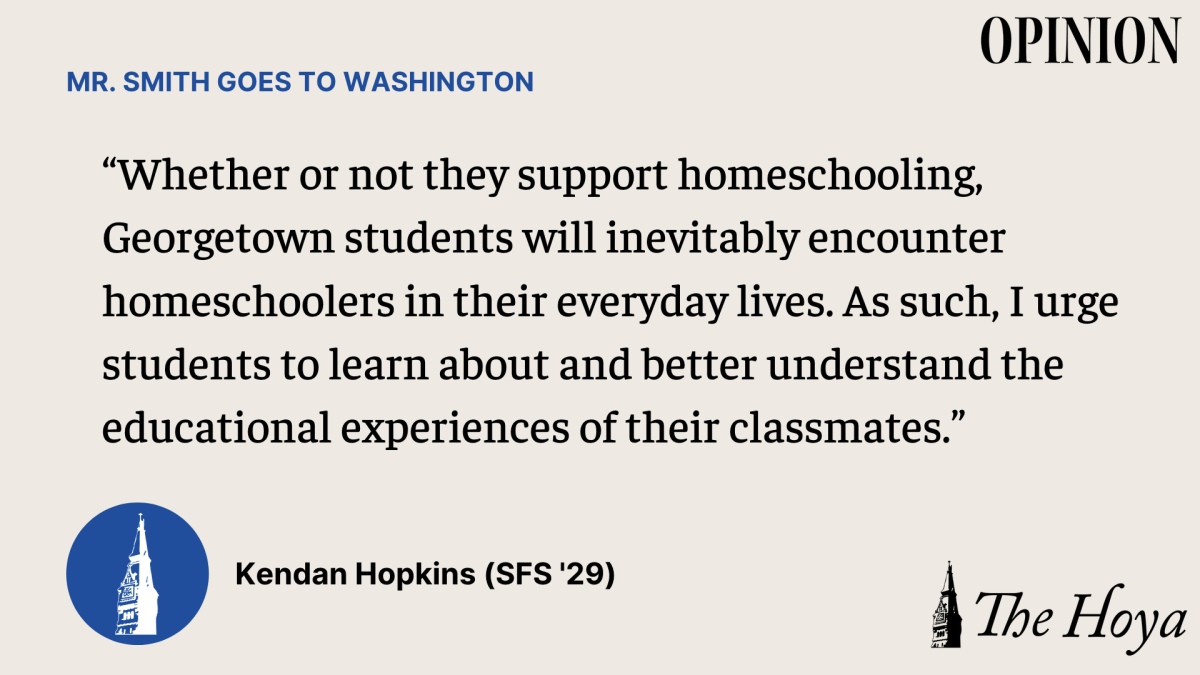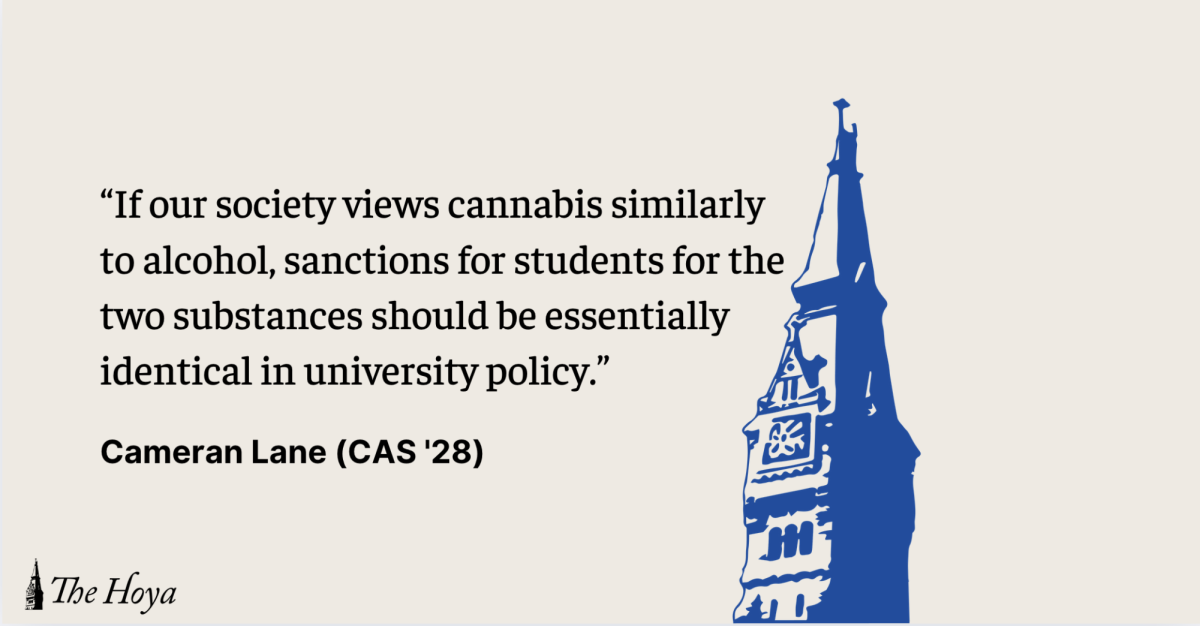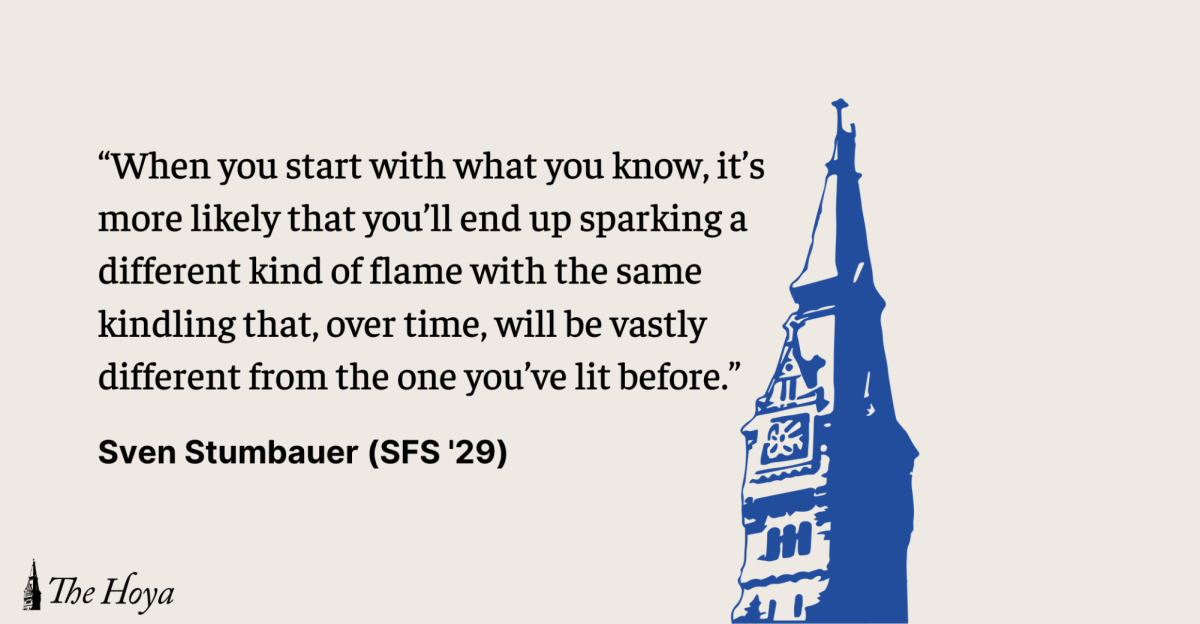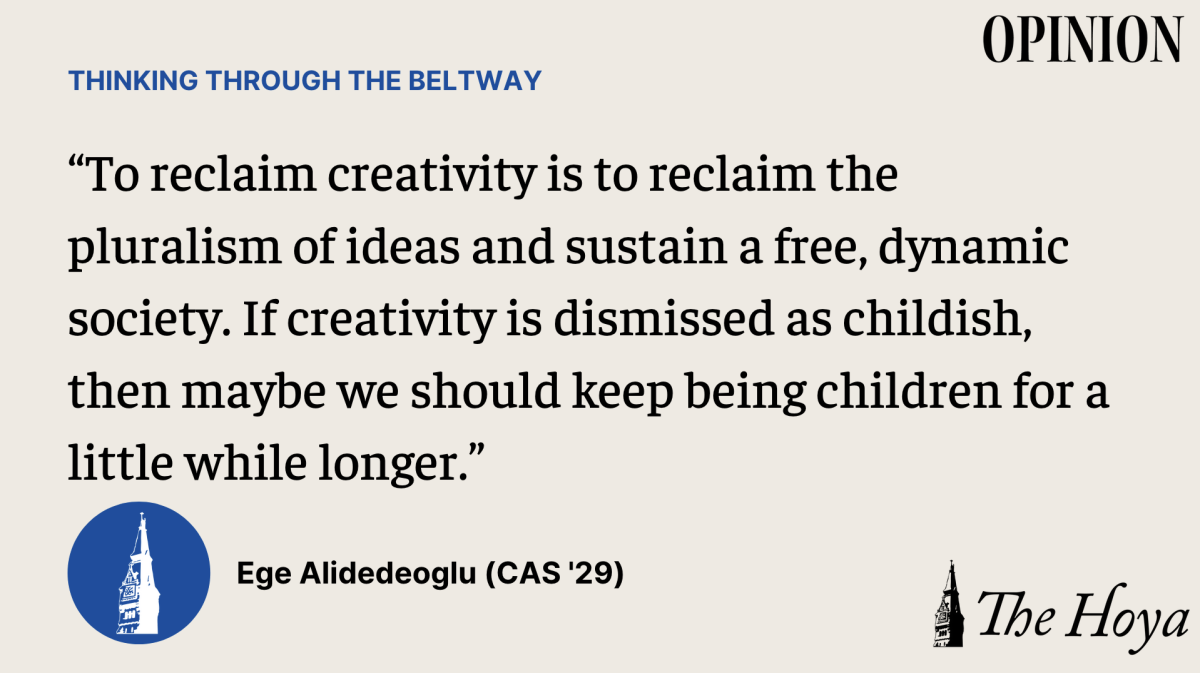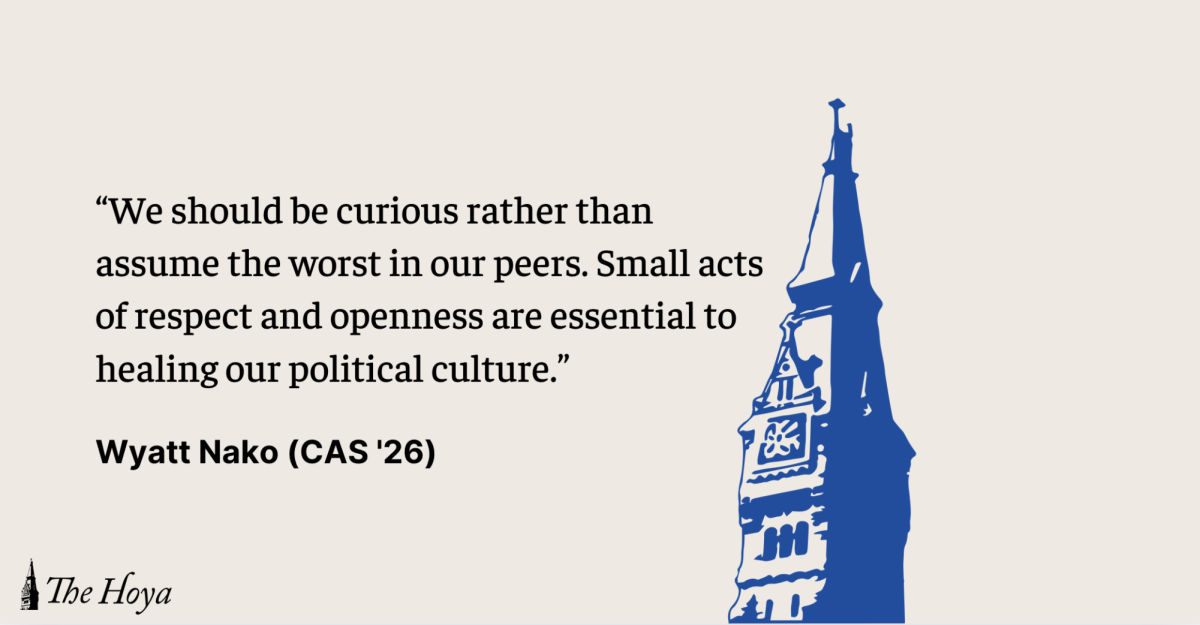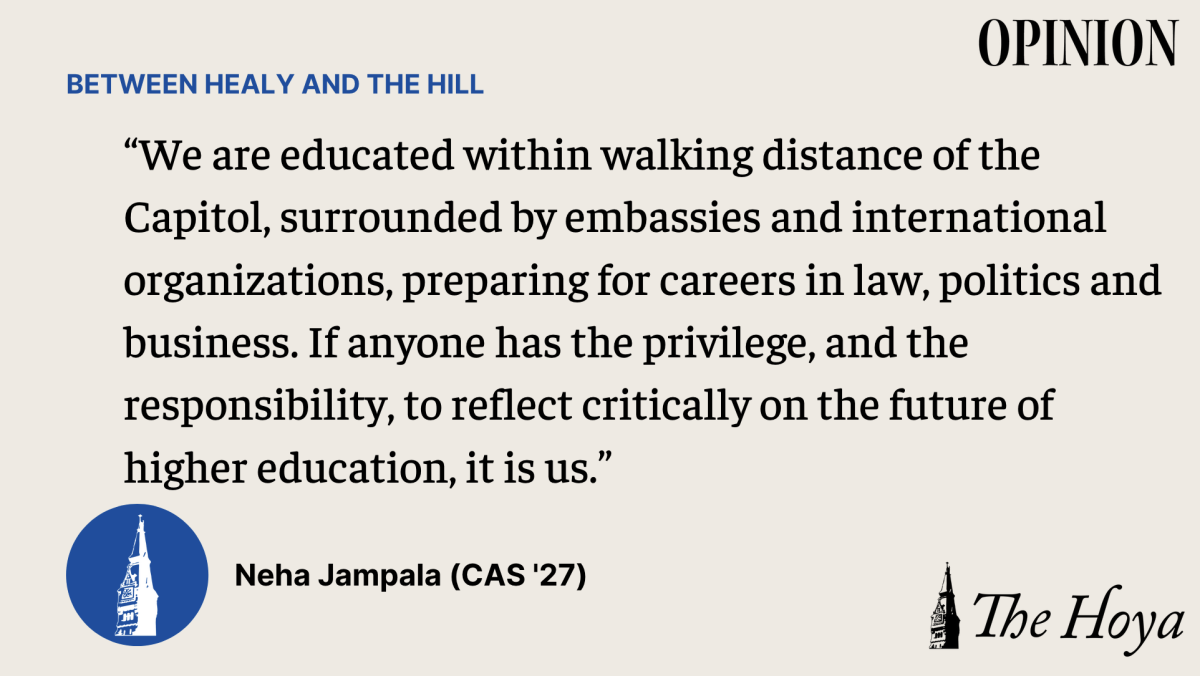Some professors forbid it. Some professors encourage it.
Whether or not students employ it for their academics, artificial intelligence (AI) has become synonymous with the college experience.
The technology has impacted academia in higher education, leaving students and professors alike unsure how to handle the new tool. Its use has grown rapidly in recent years, especially on college campuses. Research on higher education suggests up to 92% of students use AI, while 61% of faculty report using AI. This prevalence is unlikely to disappear in the near future, as AI is expected to become better and more efficient.
Georgetown University takes a laissez-faire approach to AI use in its classrooms, issuing guidelines that largely allow a professor’s syllabus to dictate AI guidelines. While encouraging adaptable AI policy is commendable, the Editorial Board believes this approach creates more problems than it solves.
Without proper direction through a standardized university-wide policy, the Georgetown administration risks unregulated AI use that directly harms learning. Alternatively, it risks falling behind other universities if it fails to prepare students to use AI as a tool effectively. The Editorial Board calls on the university to solve these problems by implementing concrete guidelines for AI use and education on campus.
A university spokesperson said Georgetown hopes students learn proper use of AI with a malleable policy.
“Georgetown aims to equip students with the discernment to engage with AI effectively while identifying and mitigating its potential harms,” the spokesperson wrote to The Hoya. “This commitment not only encourages students to approach AI with intellectual rigor, but also affirms the distinctiveness of each course by deferring to course-specific policies, thereby preparing students for future professional landscapes where discernment, adaptability, and responsible use of AI will be essential.”
The spokesperson added that Georgetown’s approach is based on informed input from faculty and staff.
“The University will continue to study the issue and adapt appropriately,” the spokesperson added.
There are certainly ways that AI can be additive to education: It can provide direct and personalized feedback to students on writing, help simplify complex concepts and hasten administrative work. AI platforms can help students learn languages through transcription and explanatory services.
Kristina Georgieva (SFS ‘28), who had multiple professors encourage AI use, said AI can be an effective resource to alleviate uncertainty.
“AI should be seen as a resource that students can utilize during uncertainty,” Georgeieva wrote to The Hoya. “Professors should not be intimidated by AI but embrace it as a tool for students who need further explanation of lectures.”
Considering these benefits, banning AI wholesale from Georgetown would be wrong. Students must learn to use AI tools both effectively and ethically to prepare for a workplace increasingly reliant on this technology. Universities should find a balance that emphasizes AI’s use while minimizing its drawbacks.
As AI usage becomes ubiquitous in the workplace, Georgetown students must stay ahead of the curve to understand its impacts in a professional context. Currently, there are only four certificate options that deal with AI under the School of Continuing Studies. To prepare students for this adapting workplace, Georgetown should offer increased undergraduate coursework opportunities to contextualize AI, such as a certificate, minor or major program explicitly related to AI.
That being said, it is too easy for student AI use to go too far without clear regulation. Professors and students can agree that certain uses of AI are not constructive, such as using AI chatbots to write essays or answer exam questions. Beyond the inherent issue of plagiarism, research has linked increased AI use to lower critical thinking skills. When students begin to lean too heavily on AI, they risk experiencing cognitive offloading, a reduction in mental effort that can have long-term impacts on memory, attention and problem-solving abilities.
There are further implications for AI use beyond the classroom. Recent developments in deep learning and neural networks have led to the emergence of “generative art,” raising fears AI will undermine human creativity as a whole. Art has always been a fundamentally human pursuit, raising ethical concerns about the future of creativity. AI is also harmful to the environment — training a single AI model can produce 626,000 tons of carbon emissions, nearly 5 times the lifetime emissions of the average car.
Sara Holler (CAS ’28), who has encountered different strictness levels of AI, said AI does not belong in the classroom.
“Students need to learn how to use AI responsibly, because the point of education is to grow one’s critical thinking and analysis skills, and I think AI over-reliance is acting counterproductively to that goal,” Holler wrote to The Hoya.
We also recognize that social pressures may turn students to generative AI to ease their schoolwork. Students are more overwhelmed than ever before, with over 55% of college students reportedly experiencing academic burnout due to academic and social pressures. Approximately three-quarters of students feel overwhelmed by their workload, and almost half report symptoms of depression. However, the Editorial Board agrees that allowing students to default to AI to alleviate this stress is not the answer.
Instead, we encourage university administrators to evaluate the origins of this stress and take measures to combat them. Efforts like support groups, increased counseling and decreased barriers for students to take leaves at the University of Virginia and Johns Hopkins University have shown promise in reducing student stress and anxiety. Simultaneously, the university should educate students on all facets of AI to prepare them for their professional futures.
Georgetown aims to “educate women and men to be reflective lifelong learners.” This becomes impossible if unregulated, uninformed AI use is allowed to take away the very elements that foster students’ curiosity and drive.
The Hoya’s Editorial Board is composed of six students and is chaired by the senior opinion editors. Editorials reflect only the beliefs of a majority of the board and are not representative of The Hoya or any individual member of the board.
